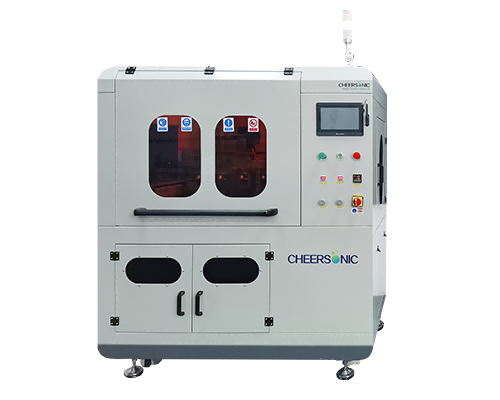Introducing Photosensitive Polyimide
Introducing Photosensitive Polyimide – Polyimide Coating System – Cheersonic
Photosensitive polyimide (PSPI) is a high-performance material with unique properties that is widely used in electronics and microelectronics. It combines the excellent physical and chemical properties of traditional polyimide (PI) with the characteristics of photosensitive materials, providing revolutionary solutions for semiconductor manufacturing, precision electronic equipment, and high-performance circuit boards.
Physical and chemical properties.
High Temperature Stability:
PSPI is able to maintain its physical properties over an extremely wide temperature range, typically from -269°C to +400°C, making it ideal for applications in extreme environments.
Excellent electrical properties: PSPI has a low dielectric constant and high dielectric strength, which means it is able to provide good electrical insulation while resisting high voltage impacts. Mechanical properties: This material has high strength, toughness and good impact resistance, maintaining these properties even in film form. Chemical stability: PSPI exhibits extremely high resistance to a variety of organic solvents, acids, and alkalis, ensuring stability and reliability during chemical processing.
Photosensitive properties
A distinctive feature of PSPI is its photosensitivity, which can cause chemical structural changes under the action of light (such as ultraviolet light). This change allows the unexposed portions to be developed with specific solvents, creating precise patterns on the PSPI film. This feature greatly simplifies the manufacturing process of microelectronic devices and circuit boards, improving production efficiency and accuracy. Application areas
Semiconductor manufacturing: PSPI, as a photoresist, is used in the manufacturing of microelectronic devices and can form extremely fine circuit patterns.
High-Performance Circuit Boards: In the production of multi-layer printed circuit boards (PCBs), PSPI is used as an insulating and dielectric layer to provide high-performance electrical insulation and protection. Microelectronic packaging: PSPI is used in packaging technology as a protective layer or insulating layer to ensure the stability and performance of packaged microelectronic devices under extreme conditions.
Manufacturing and processing
The processing of PSPI usually involves steps such as coating, pre-baking, exposure, development and curing. This processing process is simpler than traditional non-photosensitive polyimide materials and can achieve rapid manufacturing of fine patterns without the need for complex photolithography equipment.
In summary, PSPI (photosensitive polyimide) provides efficient and precise material solutions for semiconductor manufacturing, high-performance circuit board production and microelectronics packaging with its excellent physical and chemical properties and photosensitivity. Its application not only improves production efficiency and product performance, but also promotes the development of the electronics industry toward higher precision and smaller size.
Ultrasonic spraying systems have been proven to be used in various applications that require uniform and repeatable photoresist or polyimide film coatings. The thickness control range is from submicron to more than 100 microns, and any shape or size can be coated.
Ultrasonic spraying technology is used for semiconductor photoresist coating. Compared with traditional coating processes such as spin coating and dip coating, it has the advantages of high uniformity, good encapsulation of microstructures, and controllable coating area. In the past 10 years, it has been fully demonstrated that the 3D microstructure surface photoresist coating using ultrasonic spraying technology, the prepared photoresist coating is significantly higher than the traditional spin coating in terms of microstructure wrapping and uniformity Craft.
The ultrasonic spraying system can precisely control the flow rate, coating speed and deposition volume. Low-speed spray shaping defines atomized spray as a precise and controllable pattern to avoid excessive spray when producing a very thin and uniform layer. The ultrasonic spray system can control the thickness from sub-micron to more than 100 microns, and can coat any shape or size.
About Cheersonic
Cheersonic is the leading developer and manufacturer of ultrasonic coating systems for applying precise, thin film coatings to protect, strengthen or smooth surfaces on parts and components for the microelectronics/electronics, alternative energy, medical and industrial markets, including specialized glass applications in construction and automotive.
Our coating solutions are environmentally-friendly, efficient and highly reliable, and enable dramatic reductions in overspray, savings in raw material, water and energy usage and provide improved process repeatability, transfer efficiency, high uniformity and reduced emissions.
Chinese Website: Cheersonic Provides Professional Coating Solutions


